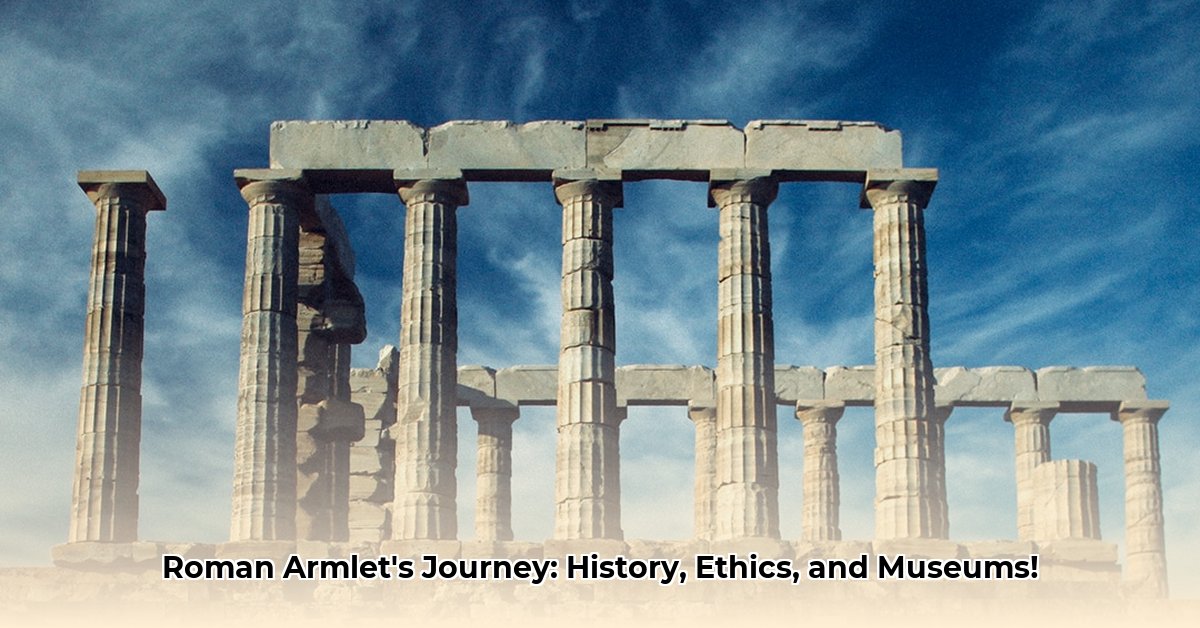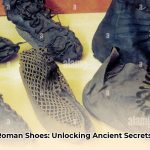Have you ever considered the profound stories a single piece of ancient jewelry can silently tell? Beyond mere aesthetics, an ancient Roman armlet serves as a remarkable time capsule, offering a rare glimpse into the complex lives, social strata, and unparalleled craftsmanship of a bygone era. Learn more with this guide to Roman Era Jewelry. These historical objects were not simply adornments; they were potent symbols, reflecting the wearer’s status, wealth, military prowess, or spiritual allegiance within bustling Roman society. As we delve into their historical significance, we’ll uncover the intricate details of their creation, the far-reaching ancient trade routes that spread them across continents, and the challenging ethical questions surrounding their display in museum collections today.
More Than Adornment: The Enduring Role of Roman Armlets
In the vibrant tapestry of ancient Roman civilization, armlets played a multifaceted role, far transcending simple decoration. Whether worn by men or women, these bands, often gracing the upper arm or forearm, served as clear indicators of a person’s standing, military prowess, or even spiritual connection. What kind of powerful messages did these pieces convey in an era shaped by strict social codes?
Symbols of Status and Power
The very choice of material for an ancient adornment like an armlet spoke volumes. From the accessible elegance of copper to the extravagant luster of gold, the material signaled the wearer’s economic standing. For instance, military armillae (plural of armilla) were prestigious military decorations awarded to soldiers of ancient Rome for conspicuous gallantry. Legionary citizen soldiers and non-commissioned officers below the rank of centurion were eligible, with the material (gold, silver, or bronze) often reflecting the recipient’s status and the degree of their distinguished conduct. These awards were typically given in pairs, not for everyday wear, but proudly displayed at military parades, Triumphs, or even on sarcophagi, signifying a lifetime of valor.
Beyond military honors, intricate designs—coiled serpent motifs, depictions of deities, geometric patterns, or the “Herakles knot” (a symbol of marriage)—each added layers of symbolic meaning. Such jewelry symbolism could denote wealth, military valor, or a deeply held religious affiliation. The popularity of snake-shaped armlets, particularly in Hellenistic and Roman contexts, suggests their potent use as amulets, often linked to healing deities like the Egyptian goddess Isis or the Greek god Asclepios. This practice underscores how intimately connected these objects were to Roman beliefs and values.
The Artistry of Roman Metalwork
The creation of these Roman artifacts showcases the remarkable skill of ancient artisans. Roman metalworkers transformed raw materials—bronze, copper, silver, precious gems, and gold—into sophisticated and meaningful objects. Using advanced techniques like casting, hammering, engraving, filigree, and even enameling, they produced pieces that were not only beautiful but durable. It is truly astonishing to consider the precision and artistry achieved with the tools available centuries ago. Skilled artisans painstakingly shaped and detailed these pieces, reflecting the broader Roman emphasis on craftsmanship, even in everyday items.
From Battlefield to Banquet: The Diverse Forms of Roman Armlets
Roman armlets exhibited a remarkable variety in design and purpose, reflecting their diverse uses across social strata and occasions.
- Military Armillae: These were typically robust, masculine in style. Designs included solid hinged cuffs, sometimes inscribed with legionary emblems or incised patterns; open-ended spirals; chunky, rounded bracelets with open or overlapping ends; or miniature torcs. Those with open or overlapping ends often featured decorative terminals like knobs or snake-heads, echoing the Celtic influence from which many Roman military decorations originated.
- Decorative and Amuletic Armlets: Beyond military distinctions, armlets were popular accessories for both men and women. They could be made from bronze, copper, silver, and gold, often embellished with gemstones like garnet or lapis lazuli. Common motifs included serpents, winding plants, or images of gods and goddesses. The spiral form, particularly with snake-headed terminals, was widely used and believed to offer protection to the wearer. Some large, heavy armlets even had hoops on the back to attach to garments, helping to support their weight.
These varied forms highlight the versatility of the armlet within Roman society, serving roles from solemn military honors to everyday fashion statements and powerful personal amulets.
The Monte Albano Armlet: A Transcontinental Tale
Among the many intriguing Roman armlets discovered, the Monte Albano example offers a particularly compelling narrative. This specific artifact, now a prized possession of the Auckland War Memorial Museum in New Zealand, embodies a journey across vast distances and through the annals of time.
Unveiling a Copper Mystery
The Monte Albano armlet itself is a fascinating object—crafted from 4 mm-thick copper wire, it features a distinctive coiled design of 23 coils, each decreasing in diameter. This spiral-like structure likely allowed the bracelet to adjust slightly to the wearer’s arm, a testament to prevalent Roman craftsmanship and the era’s popular Hellenistic styles. Its presence suggests that decorative items were not solely reserved for the elite; rather, they were accessible across different social strata. Its very existence prompts us to imagine the individual who wore it—perhaps an ordinary Roman citizen, a prosperous merchant, or even a soldier on a distant campaign—and their place in the sprawling Roman world. Copper, widely used, was valued for its aesthetic appeal, durability, and symbolic significance.
Tracing Its Improbable Journey
The journey of the Monte Albano armlet from its Italian origins to a museum display half a world away is a captivating and complex one. Was it transported unwittingly as part of a soldier’s kit? Was it a valued item carried by a traveler or merchant along ancient trade routes? The lack of definitive records about its specific provenance (the history of its ownership and location) only adds to its mystique and underscores the sweeping reach of the Roman Empire. Its eventual arrival in New Zealand highlights the incredible movement of historical objects across continents, offering unique insights into historical connections that might otherwise remain unseen.
Decoding Ancient Symbolism in Armlets
The allure of ancient armlets extends far beyond their material value; they are rich repositories of cultural meaning. Every motif, every choice of material, was imbued with jewelry symbolism. A serpent motif, for instance, might symbolize healing, rebirth, or eternal life, while others could denote status, military rank, or religious devotion. The “Herakles knot,” found on some Greek and Roman armlets, symbolized marriage and enduring love, believed to have originated in ancient Egypt. Deciphering these ancient symbols allows us to truly appreciate the beliefs and values of the societies that produced them. These artifacts serve as tangible links, connecting modern audiences to the mindset and values of a civilization that shaped much of the Western world.
Beyond Borders: Trade, Provenance, and Global Connections
The discovery of Roman artifacts like the Monte Albano armlet in locations far removed from their origin profoundly illuminates the extensive ancient trade networks that crisscrossed the globe. These networks facilitated the exchange of goods, technologies, and ideas across vast distances, connecting diverse cultures. Such movements allow modern scholars to understand the complex interconnections between seemingly disparate civilizations. For instance, analyzing the metallic composition and trace elements within the Monte Albano armlet could unveil the specific routes through which raw materials traveled, further enriching our understanding of the Roman Empire legacy and its global impact. Discussions around provenance research are critical in understanding these global journeys and the historical context of each piece.
The Ethical Compass: Cultural Heritage and Museum Responsibilities
The presence of objects like the Monte Albano armlet in international museum collections raises significant ethical questions concerning cultural heritage. Should these culturally significant items permanently reside in their countries of origin, or do museums worldwide bear a responsibility to preserve them and make them accessible to a broader global audience? This ongoing repatriation debate highlights the tension between the protection of past cultures and the desire for universal access to historical significance. There are no simple answers, only complex considerations that demand thoughtful discussion among archaeologists, museum professionals, and cultural heritage organizations globally.
| Issue | Museum Perspective | Origin Country Perspective |
|---|---|---|
| Preservation | Museums often possess the resources and specialized knowledge required for the preservation of delicate and ancient artifacts, ensuring their survival for future generations through careful handling and climate control. | Origin countries may face significant limitations regarding financial resources, specialized facilities, and trained personnel, potentially hindering their ability to adequately preserve culturally significant artifacts. |
| Accessibility | Museums provide a unique opportunity for global audiences to engage with and learn about diverse cultures and historical periods through the display of artifacts, fostering cross-cultural understanding and appreciation. | Artifacts housed in museums far from their original context can become inaccessible to the people of the origin country, depriving them of the opportunity to connect with their cultural heritage and history firsthand. |
| Cultural Ownership | Museums often contend that they act as custodians of cultural heritage, safeguarding these artifacts for the benefit of all humanity and ensuring their preservation for future generations, regardless of geographic origin. | Origin countries assert their inherent right to reclaim ownership of their cultural patrimony, emphasizing that these artifacts hold deep cultural, historical, and spiritual significance for their people and should be returned to their place of origin. |
| Educational Opportunity | Museums offer extensive educational programs, exhibits, and resources that provide valuable insights into diverse cultures, historical periods, and artistic traditions, fostering learning and promoting a deeper understanding of human history. | Displaying artifacts within their original cultural context, surrounded by related objects and information, can significantly enhance understanding and cultural pride, providing a more authentic and meaningful experience for visitors and local communities alike. |
Preserving Legacies: The Future of Ancient Artifacts
The meticulous preservation efforts undertaken by institutions like the Auckland War Memorial Museum are crucial. Advanced conservation techniques protect artifacts from environmental degradation, ensuring that future generations can appreciate these irreplaceable links to our past. The Monte Albano armlet, with its 23 delicate coils, stands as a testament to the enduring power of Roman artistry and the complex journey of archaeological discoveries across time and continents. Further research into its metallic composition and trace elements could unveil even more detailed insights into ancient metalworking skills and historical manufacturing processes, providing clues to the identity of its original wearer or the workshops where it was forged.
As we continue to explore our past, artifacts like the Monte Albano armlet will remain vital voices. They challenge us to reflect on the nature of ownership, the responsibilities of cultural custodians, and the profound human connections that transcend time and geography.
Key Takeaways:
- Ancient Roman armlets served as potent indicators of social standing, wealth, and military rank, offering unique insights into Roman society and personal adornment.
- The Monte Albano armlet, now housed in the Auckland War Memorial Museum, exemplifies the vast reach of ancient trade routes and the fascinating, often unknown, journeys historical objects undertake.
- The display of cultural heritage items like the Monte Albano armlet in international museum collections sparks crucial ethical discussions regarding repatriation debate, preservation, and global accessibility.
- From military adornments to protective amulets, Roman armlets showcase remarkable Roman craftsmanship and a rich tapestry of jewelry symbolism.










